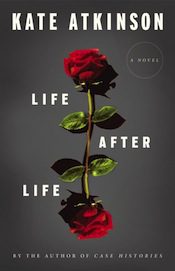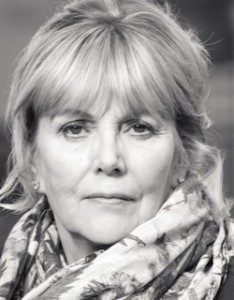
When we are young every decision seems weighted with extra meaning. A teenager can trace the exact steps that lead from the missing of a ski trip to the life of an outcast. Not being allowed to date a certain boy means remaining single forever. The smallest thing changes their entire world, or so they believe. As adults we know better and smile at their dramatic protestations.
But what if they are right? What if one choice sets off a series of others that completely alters who we are and what happens to us in this world? That is the premise of Kate Atkinson’s Life After Life.
It is giving nothing away to say that the heroine of Atkinson’s novel, Ursula Todd, dies. The first time she dies is on page four. The second time is on page eight. Death is a constant in the book, a character that is always hovering in the background. We come to expect it, to accept it and, on at least one occasion, to look forward to it.
For most of us in the modern western world, death is kept mostly at bay by advanced medicine, technology and safety practices. We don’t expect babies and children to die. When they do we devote entire news cycles to the tragedy. Death is reserved for the old and unfortunate. Not us.
For the Todd family living in England in the early 20th century death is always present. There is World War I and World War II, influenza, tuberculosis and childbirth. A young mother approaching her baby’s crib is reminded of her own father’s coffin. A woman dies with “less fuss than was expected” and her daughter gets married.
While it is not a joyous presence, the presence of death adds something to the characters’ lives, a deeper appreciation maybe of what a gift life is and how easy it is to lose it. That doesn’t mean death is any less devastating when it strikes the Todd family. It is cruel and arbitrary and seldom occurs for good reason. Instead it happens because of a misplaced step, a distraction, an ordinary illness. On each occasion when Ursula dies, one little thing could have saved her: a pair of scissors, a bystander, a dog. In some versions that the novel chronicles Ursula lives and in doing so changes not only her own life, but the lives of those around her, sometimes for the better, sometimes not.

It is a fascinating premise that reminds me of the Choose Your Own Adventure children’s books that offer multiple endings for a single story. In these books the reader chooses what will happen in a certain situation. Although they get a choice, in reality they are not altering the outcome because the author has already written endings for all the different versions. The same is true of Ursula, who has vague memories of her past deaths but no way of knowing exactly how she can prevent them and what will happen should she succeed.
Atkinson’s novel Behind the Scenes at the Museum was named the UK’s Whitbread Book of the Year in 1995 and many of her other books have become bestsellers. Early reviews praise her for being both provocative and entertaining in Life After Life. At more than 500 pages it is impressive for its heft alone. But by its very nature, Life After Life can be hard to follow. Ursula dies too often at the start and numerous asides placed in brackets can distract from the action on the page. But if you stick with the novel you will be rewarded by little turns of phrases like the description of sun, clouds and rain as the “somewhat random embellishments the seasons brought with them.” And by showing us all the different ways Ursula Todd’s life could have been lived, Atkinson, who lives in Edinburgh, shows us just how little separates our fate from that of our neighbors. A mother in one version may call a woman whose daughter has been murdered inattentive only to lose her own child in another version when she herself is distracted.
The versions that were the hardest to read were not the ones that resulted in Ursula’s early demise, but the ones that left her in a life so devoid of hope and love I longed for her to die. Atkinson is patient in the pictures she paints and the reader must be patient alongside her. The reward is a peek at another world that we may never know, but that will always haunt us. What would have happened, what could have happened, what might still happen.




